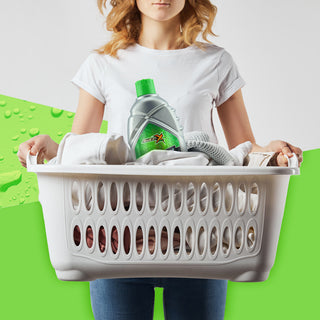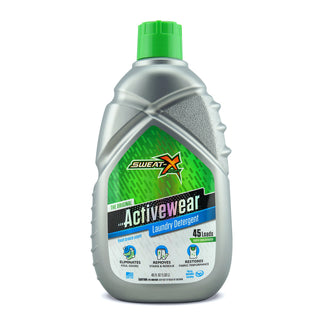A Guide to Safe Outdoor Activities During the Coronavirus Pandemic
With officials urging us to limit unnecessary travel, many of us might be starting to feel a bit stir crazy. Being outside and in nature is important for dealing with stress and anxiety—the exact emotions in overdrive right now. But is it possible to safely head outdoors without putting your and others’ health at risk?
The short answer is yes—we can technically walk, run, and bike alone or with our immediate household without violating social distancing rules. But there’s more to consider before opening the door.
Adhere to official guidelines
Before you lace up your shoes, check what local health officials are saying for your area. “It's really important that people understand the situation that they're in,” says Lisa Miller, epidemiologist at the Colorado School of Public Health. “Understand your own locality and the public health recommendations or public health orders that are in place and abide by those first and foremost.”
In some locations with more cases of the virus, access to beaches, parks, and trails is being restricted. Restrictions can be very localized—while the California Coronavirus Response website says that you can still hike and run outside, individual cities and counties in the state are closing outdoor areas that proved to be too crowded to maintain safe distances. Also, while national park fees have been waived, many are individually cutting back on camping and visitor services, or closing altogether.
For some activities, you may be able to find guidance from local sport-specific organizations. In Salt Lake City, for example, the local rock climbing association has told climbers to stay away from outdoor cliffs, as there are simply too many rock climbers in the area to maintain a safe distance.
If we’ve learned anything from this experience, it’s that the guidelines for best practices can change from day-to-day. So stay informed. “If that means you really need to stick to indoor exercise, then stick to indoor exercise,” adds Miller. “If it's still allowed to be outside and exercising, that's great, but really maintain that six-foot distance from people and don't engage in activities that are going to bring you into contact with other people.”
Safe activities: minimize contact, shared surfaces with others
In general, running, walking, and biking solo or with your immediate household can be done with minimal risk of catching or spreading the virus. But sports performed in groups and involving physical contact are a no-go. Miller says to remember that the virus can be spread by direct contact or by touching the same objects. When considering an activity, think about how close you’ll be to others and whether you’ll be touching the same things. The more often a ball or other piece of sports equipment is touched by someone other than yourself, the more risk you’re introducing for disease spread. If your go-to sport has too many uncertainties to make a clear call—say, not knowing if it will be possible to maintain distance at a particular trail or park—it’s better to be conservative and don’t go.
If you’ve satisfied all the above precautions and are ready to go, “wash your hands before you go out,” says Grace Roberts, a virologist at Queen’s University Belfast. “You don’t know if you’re infected.” Also, bring everything you need—water, snacks, etc.—so that you can minimize having to stop at any stores. Don’t use public restrooms or other shared facilities.
Then, when you’re out, avoid touching surfaces with your hands and keep your hands away from your face. For example, you might use your elbow to hit a crosswalk button. Roberts says that when she’s running, she reserves her left hand for hitting the crosswalk button or any other surfaces, while her right hand is used for adjusting her glasses, or handling water and snacks. Once you get home, immediately wash your hands.
Stay local and spread out
Those experiencing a layoff or the newly-found freedom of remote work may have misinterpreted what it means to self-quarantine. In recent weeks, officials in outdoor tourism hotspots have made calls for travellers to stay home. In a letter, hospital executives in the outdoors-centric Moab, Utah-area expressed concern over the impact of tourism: “As a 17-bed critical access hospital, we have no ICU and minimal capability to care for critical respiratory patients. Additionally, we are now concerned that tourism will drive the spread of SARS-CoV-2.”
Even the best-intentioned travellers will have to make stops for gas and groceries, introducing opportunities for the virus to jump to new locations. Stay close to home to prevent this. Miller says to think about all the steps involved in a particular activity—will you have to stop for food, equipment, or anything else? The more stops, the more you risk contracting and spreading the virus. “You can’t just think about the end goal,” says Miller. “You have to think about all of those other things.”
Even for local trips, plan routes carefully. Think about which locations tend to get crowded, and choose less-busy alternatives. As the nonprofit outdoor organization Leave No Trace puts it: “Absolutely avoid crowded parks, trails and beaches. Social distancing applies in the outdoors just as it does anywhere else.” And, the group adds, be prepared to pack out any trash, since many parks are only providing limited services right now.
Hospitals don’t need more patients—choose low-risk sports
With many areas concerned about hospital capacity, now is not the time to take any risks. Tommy Caldwell, a professional rock climber, told his Instagram followers last week that he wouldn’t be climbing outside during the health crisis: “Soon taking up space in a hospital bed will amount to a death sentence for someone else."
With ski resorts closed, the Colorado Sun reports that more Coloradans are taking to the backcountry to ski, facing increased risks. Especially if that new crowd includes skiers without essential gear and training, it could place an additional burden on emergency services and hospitals. And, of course, denser crowds means it’s harder to maintain six feet of space.
This advice even goes for city-bound activities, like road cycling. Roberts says that cyclists should think about which routes put them in close contact with motorists. If you’re planning bike rides, you may want to avoid routes where you have to share the roads with cars to reduce the odds of getting in an accident.
“You want to make sure that you are limiting risk and not getting injured because the last thing you want to do is end up in a health care system, especially for communities that may not have a lot of healthcare resources,” says Miller. “Most health care resources right now are really focused on making sure they preserve all the resources they possibly can for COVID-19.”
Written by Ula Chrobak for Popular Science and legally licensed through the Matcha publisher network. Please direct all licensing questions to legal@getmatcha.com.







